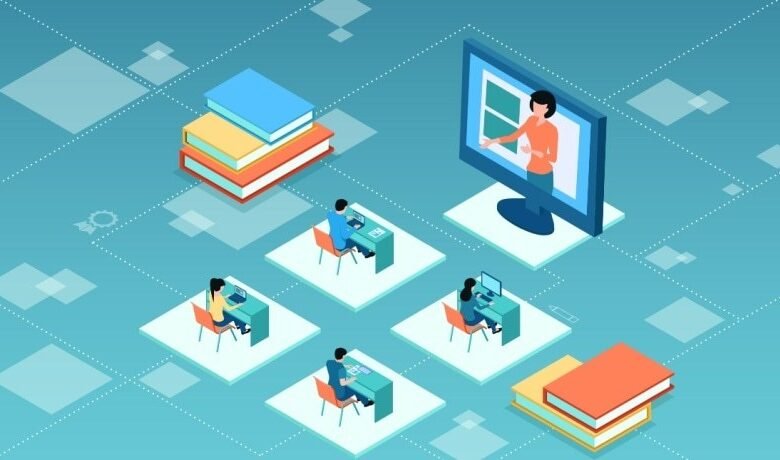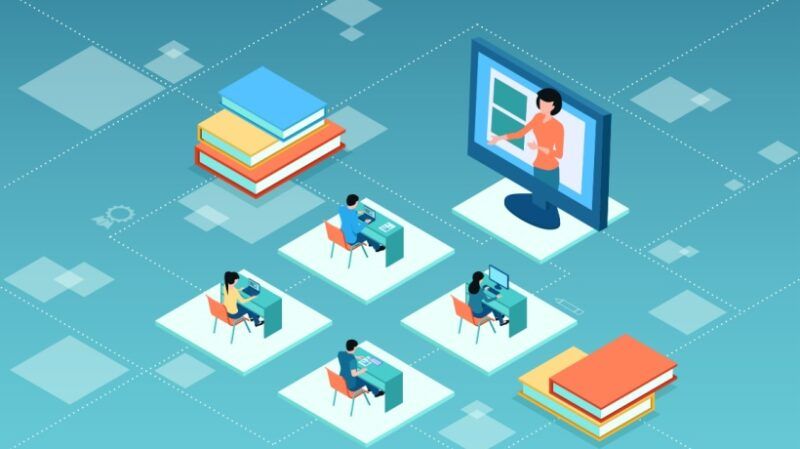Mental Health In Virtual Classrooms: 8 Tech-Driven Strategies


Harnessing Digital Tools To Foster Learning
Let’s face it—virtual classrooms aren’t just a temporary fix anymore. They’re here to stay, so while they’re there, why not benefit from them? However, despite offering flexibility, online learning also comes with challenges. Take glitchy Wi-Fi, distractions at home, and the eerie silence of muted microphones. The worst part is that students often feel isolated, disengaged, or overwhelmed. So, what benefits are they talking about? Understanding that technology isn’t just the problem; it is also the solution to ensuring good mental health in virtual classrooms is the way to go. By blending innovative tools with intentional care, educators can create virtual classrooms that are engaging and mentally supportive.
Top Strategies For Supporting Mental Health In Virtual Classrooms
1. Getting Things Spiced Up With Multimedia Elements
Raise your hand if you’ve ever zoned out during a lecture-style online class because we’ve all been there. The fix? Ditch the monotony and embrace multimedia! Think interactive simulations, bite-sized videos, podcasts, or even meme-style infographics. There are platforms that let teachers embed quizzes into videos, while tools can turn complex concepts into eye-catching visuals. For example, a history lesson on the Roman Empire could include a 3D virtual tour of the Colosseum or a podcast analyzing Julius Caesar’s leadership style.
- Why it works for engagement
Visual and auditory learners get content tailored to their strengths. - Mental health perk
Dynamic content reduces boredom (a major focus-killer) and lowers stress since learning feels less like a chore.
2. Gamifying The Learning Process (Yes, Really!)
Who says school can’t be fun? Gamification uses game mechanics like think points, badges, leaderboards, etc., to motivate students. Imagine a math class where solving equations earns “energy points” to unlock bonus challenges, or a vocabulary quiz where students compete for a spot on the “Word Wizard” leaderboard. Tools make it easy. One teacher shared how her students begged to review for tests after she introduced tools-based competitions.
- Why it works for engagement
Friendly competition and instant rewards tap into students’ intrinsic motivation. - Mental health perk
Achieving badges or leveling up builds confidence and reduces anxiety by framing mistakes as part of the “game.”
3. Initiating Debates And Discussions
Virtual classrooms shouldn’t be one-way streets. Encourage lively debates using platforms where students can post video responses or collaborate on digital boards. For instance, a science class might debate climate solutions in breakout rooms, while an English class could dissect a novel’s themes.
- Pro tip
Assign roles like “Devil’s Advocate” or “Fact-Checker” to keep conversations structured yet dynamic. - Why it works for engagement
Active participation > passive listening. - Mental health perk
Debating builds critical thinking and helps students feel heard, fostering a sense of belonging.
4. Personalizing The Learning Journey
No two students learn the same way. Personalized learning uses adaptive tech to tailor content to individual needs. A struggling math student might get extra practice problems, while an advanced peer skips ahead to challenges.
- Example
A middle school in Texas saw a 20% boost in test scores after implementing adaptive software that adjusted difficulty based on real-time performance. - Why it works for engagement
Students progress at their own pace, avoiding frustration or boredom. - Mental health perk
Customized support reduces the pressure to “keep up” and builds academic self-esteem.
5. Giving Feedback On Real Time (No More Waiting!)
Waiting days for graded assignments is so 2019. Real-time feedback tools let students correct mistakes ASAP. During virtual labs, teachers can pop into breakout rooms to offer live guidance.
- Why it works for engagement
Immediate feedback keeps students in “learning mode” instead of in limbo. - Mental health perk
Clarity = less anxiety. Students know where they stand and how to improve.
6. Building A Virtual “Classroom Family”
A sense of community is vital—especially online. Create a judgment-free zone where questions are celebrated. Use tools for casual check-ins (“Share a photo of your pet!”) or dedicated forums for course discussions. One high school teacher starts each class with a “Rose and Thorn” icebreaker, where students share a highlight and challenge from their week.
- Why it works for engagement
Students are more likely to participate when they feel safe. - Mental health perk
Connection combats isolation. Knowing peers and teachers care builds emotional resilience.
7. Prioritizing Mental Health Check-Ins
Mental health isn’t a sidebar—it’s part of the lesson plan. Embed quick check-ins using tools. Start class with a mood meter: “Rate your day from 1 to 10.” For deeper support, schedule virtual “office hours” or use apps that offer mindfulness exercises tailored for teens.
- Why it works for engagement
Students can’t focus if they’re emotionally struggling. - Mental health perk
Regular check-ins normalize conversations about well-being and help identify at-risk students early.
8. Powering Up Peer Collaboration
Group projects aren’t dead—they’re just virtual now. Use breakout rooms for brainstorming sessions or tools for collaborative mind mapping. In a coding class, students might team up to debug a program; in art, they could cocreate digital murals.
- Why it works for engagement
Peers often explain concepts in relatable ways. - Mental health perk
Collaboration builds social skills and reminds students they’re not alone.
Tech With Heart Wins The Race
Virtual classrooms don’t have to survive at the expense of engagement, or mental health for convenience. By blending multimedia, gamification, and compassionate check-ins, educators can create online spaces where students thrive academically and emotionally. The key? Making use of tech as a bridge, not a barrier. Tools are only as effective as the relationships they support. So, experiment with these strategies, ask students for feedback, and remember: A little creativity (and a well-timed GIF) can go a long way.
Source link




